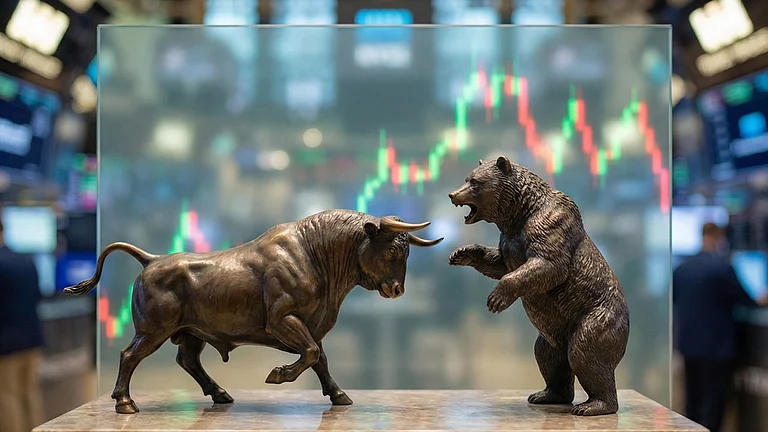After five consecutive months of brutal correction, the domestic market is finally showing some signs of recovery. Over the last month, while stock markets in major economies struggled, India’s thrived. India’s Sensex and Nifty rallied 4.74 per cent and 4.90 per cent, respectively, over the last month. Exchange data showed the combined market capitalisation of all the BSE-listed companies stood at Rs 418.29 lakh crore, or $4.87 trillion.
Against this, the US-based Dow Jones fell 3.4 per cent, the Nasdaq declined 7.8 per cent, and the S&P 500 lost 5.3 per cent, during the same time period. The sell-off in tech stocks and concerns about inflation and economic growth weighed heavily on investor sentiment.
European markets also struggled to find momentum as France’s CAC 40 dipped 0.51 per cent, and the UK’s FTSE 100 slipped 0.19 per cent. Germany’s DAX, however, rose a modest 2.38 per cent.
In Asia, China’s stock markets showed mixed results. The Shanghai-based SSE Composite Index edged down by 0.09 per cent, while the Shenzen-based SZSE Component Index rose 2.62 per cent. Hong Kong’s Hang Seng Index outperformed many others, up 2.42 per cent. Japan’s Nikkei 225, however, lost 1.65 per cent.
Saudi Arabia's Tadawul ALL-Share Index declined 4.63 per cent, and Canada’s TSX Composite also fell by 0.73 per cent, adding to the list of global markets in the red.
What Factors Played In Favour of India?
Vinod Nair, Head of Research at Geojit Investments Limited, explained that the domestic market saw a strong rally due to value buying, as stock prices returned to long-term averages and signs of earnings growth recovery appeared.
He also mentioned that increased government spending and possible interest rate cuts could boost optimism in sectors like banking, NBFCs, auto, consumer durables, and real estate. However, he noted that the trend's sustainability will depend on upcoming PMI data, Q4 earnings, and updates on US tariffs.
According to Ajit Mishra, SVP of Research at Religare Broking, several factors contributed to the sharp recovery in the domestic market. He noted that the easing pressure from foreign institutional investors (FIIs), marked by positive flows in both cash and derivatives, helped stabilise the market.
Lower crude oil prices and a weaker dollar also supported market sentiment. Additionally, signals from the US Federal Reserve about potential rate cuts and reports of de-escalation in the Russia-Ukraine conflict added to the positive outlook.














